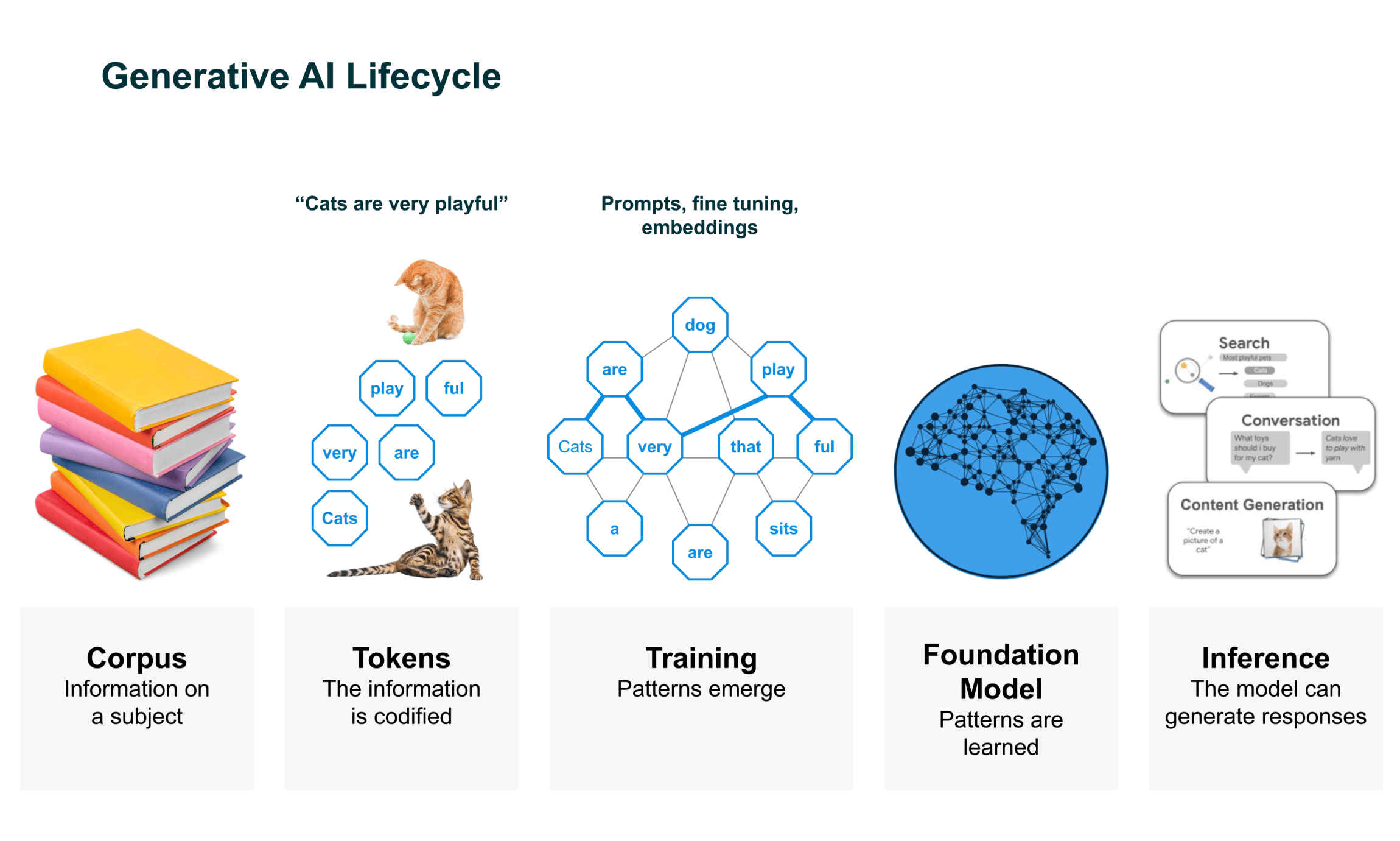
As Generative AI moves from hype to reality, retailers are increasingly recognizing the potential to elevate customer experiences, enhance productivity and even reduce costs. In a webinar hosted by CommerceNext and sponsored by commercetools, experts discussed the potential and risks of Generative AI, real-life applications across companies big and small, and the recommendations for retailers to leverage the opportunities they can capitalize on, starting now.

Generative AI (GenAI) has been the top trending topic this year and, undoubtedly, brands and retailers across the board are eager to find applications that will bring near-instant benefits. To dive deeper into the topic, CommerceNext brought together thought leaders to answer the top-of-mind GenAI questions in the webinar Revolutionizing Retail: Generative AI’s Role in Improving the Customer Experience.
Moderated by Allan Dick, Co-Founder at CommerceNext, this online event counted on the presence of Marc Stracuzza, Director of Portfolio Strategy at commercetools, Amy Salino, Director Digital and E-commerce at Cerberus Capital Management, Hani Batla, CIO/CTO at Adorama, and Bill Bass, CMO at FULLBEAUTY Brands. In this article, we explore the highlights of this lively discussion.
What’s Generative AI and how it improves customer experience
Before delving into how retailers are leveraging Generative AI, Marc set the stage to explain what this emerging technology is and how it works.
There are two major areas of AI: Predictive and generative. As the name suggests, predictive AI is all about analyzing data and predicting future trends based on machine learning and statistical algorithms, with applications that include fraud detection and payment routing in your PSP (payment service provider). Generative AI, on the other hand, is about creating new content based on training data initially provided using advanced algorithms and deep learning methods. Examples include creating product data in your PIM (product information management) system or crafting marketing emails.
Generative AI works in the following way: The information on a subject, or corpus, is based on data, text or otherwise divided into tokens. Each token is a consumable piece of the source material, like a word segment or a small pixel roofing. By training via prompts, fine-tuning and embeddings, these tokens can create patterns. These patterns are used to create foundational models, which are then used as the basis for various response-based interactions known as inference.

As anyone who has experimented with Generative AI can attest, there are different ways to influence the effectiveness of responses, such as:
In a nutshell, the more information and training you provide your AI model, the higher quality the responses will be. It also avoids hallucinations — that’s when the LLM doesn’t have the data to give an accurate answer — and the AI makes answers up.
After understanding GenAI basics, the next step is how to leverage this new technology to elevate commerce experiences. As GenAI works in patterns and mimics the way humans interact with each other, and commerce experiences are for the most part predefined interactions, there are many opportunities for (properly trained) Generative AI to dynamically create high-quality content across the user experience.
The first applications — and results — for GenAI in commerce
During a live webinar poll, 53% of the participants shared that their organization is currently exploring Generative AI to enhance the customer experience and 20% are already piloting or having a fully integrated program. That shows applications are emerging fast. The first use case that many companies are exploring is how GenAI can improve product detail pages: For instance, by giving a set of inputs and training the data, GenAI can create compelling copy according to a specific tone of voice or customer type.
Hani mentioned that Adorama, a camera, electronics and film equipment retailer, has started to improve content for its products online as a way to keep the customer on their website instead of straying away to Google for more information. Generative AI is helping the company to fine-tune useful content coming from user reviews, FAQs and other sources, and bringing it all together in one place. Aside from this low-hanging fruit application, Hani also sees GenAI playing a bigger role in product discovery as a whole. And indeed, AI-powered search and merchandising applications are growing.
Another application for GenAI that can help retailers is to predict the ROI of specific social media influencers. According to Amy, the data science team at Cerberus Capital Management created a model that leverages the attribution method to successfully predict which influencers would bring more returns.
Speaking of ROI, Bill explained how GenAI has contributed to a low-effort yet high-return application: Writing email subjects. When creating a second headline for an A/B test, GenAI created options that usually win half the time and get about a 4% increase in open rates over the headline it beats. With FULLBEAUTY Brands generating about 200 million USD a year from email marketing, that low-hanging fruit application alone brought tremendous results.
A/B testing using GenAI can boost even more results in product detail pages, according to Marc, as you can essentially try out what content works best — and even take it to the next level with hyper-personalization. Because GenAI excels in combining multiple sets of information together, personalizing interactions becomes much easier and faster. For example, if you’re looking for a car seat that comfortably fits in a small car for under 100 USD, AI can compare that request to a vast dataset against product descriptions and provide you with a list of recommendations.
Another use case is customer service. GenAI can be used to train chatbots about your brand, products, tone of voice and so on. Chatbots have been around for a while and already work to a certain extent, but could be further optimized to handle more complex interactions, pulling information from customer records and order history a lot faster than a human could.
However, the consensus across the board is that leaving an unsupervised chatbot interacting with customers may be too risky as even trained AI models may be prone to hallucinations. The overall recommendation is that, just like all applications GenAI can contribute to, AI-powered customer service needs human oversight. And that’s crucial because, as much as GenAI provides a wealth of opportunities, it also brings risks. Amy pointed out the importance of responsible AI and the rise of ethical best practices to counteract any potential risks.
How to get started with Generative AI
The first step to starting with GenAI is to experiment with it yourself. Try it out and see what works for you — it can be copywriting, generation of images or even using it as a search engine. Then you can think about the real value and opportunities in your organization. Ask yourself: What areas of your customer experience are lacking? Or, what could potentially be improved with the help of GenAI? Think about your brand, what experiences you want to create, and the efficiencies of leveraging GenAI from low-hanging fruit applications like product descriptions to more futuristic use cases such as hyper-personalization. And remember, it’s vital to also consider security, privacy and legal concerns throughout this process.
When it comes to integrating GenAI into your commerce experiences, a composable ecosystem helps you leverage these new applications in a plug-and-play manner via APIs and open access to extensive data. In a composable environment like commercetools, you can utilize GenAI meaningfully and practically not only by accessing data without constraints to create improved and personalized customer experiences but also by simplifying integrations and more.
Get inspired with our GenAI prompt engineering experiment and learn how to harness the potential of Generative AI in the realm of digital commerce.